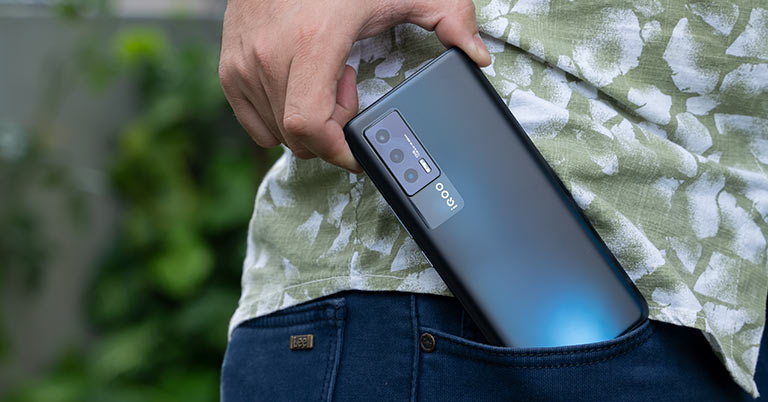
So, here I am finally with the review of Vivo iQOO 7. It recently launched in India at a starting price of INR 32,000 and goes head to head against the likes of Xiaomi Mi 11X aka the POCO F3, which we know is a fantastic premium midrange phone that you can buy right now. And this is our review of the iQOO 7.
iQOO 7 Specifications:
- Body: 76.4 x 163.3 x 8.4mm, 196 gm, Schott Xensation Glass
- Display: 6.62-inches AMOLED, 120Hz refresh rate, 300Hz touch sampling rate, Schott Xensation Glass, 1300 nits (peak) brightness, 105% NTSC, HDR10+, SGS Eye Care
- Resolution: FHD+ (2400 x 1080 pixels), 20:9 aspect ratio, 398 PPI
- Chipset: Qualcomm Snapdragon 870 5G (7nm Mobile Platform)
- CPU: Octa-core (1×3.2 GHz Kryo 585 & 3×2.42 GHz Kryo 585 & 4×1.80 GHz Kryo 585)
- GPU: Adreno 650
- Memory: 8/12GB LPDDR4X RAM, 128/256GB UFS 3.1 storage (fixed)
- Software & UI: Android 11 with Vivo’s Funtouch OS 11.1 on top
- Rear Camera: Triple-camera (with LED flash);
– 48MP f/1.8 Sony IMX598 sensor, PDAF, OIS
– 13MP f/2.2 ultra-wide lens, 120º FOV
– 2MP f/2.4 portrait sensor - Front Camera: 16MP f/2.0 sensor (punch-hole cutout)
- Audio: Stereo speakers, Hi-Res Audio, No 3.5mm audio jack
- Security: In-display fingerprint sensor, Face unlock
- Sensors: Accelerometer, Gyro, Proximity, Ambient Light, Electronic compass, Linear Motor
- Connectivity: Dual-SIM (Nano), Wi-Fi 802.11 a/b/g/n/ac (Dual-band), Bluetooth 5.1, GPS / AGPS / Glonass, USB Type-C, NFC, 4G LTE, 5G (sub-6GHz)
- Battery: 4400mAh with 66W FlashCharge (66W adapter provided)
- Color options: Storm Black, Solid Ice Blue
- Price in Nepal: N/A (Not launched yet)
iQOO 7 Review:
The love for POCO F3 has grown even more among tech enthusiasts in recent days because my favorite tech YouTuber Mrwhosetheboss ranked it as his best value phone of 2021.
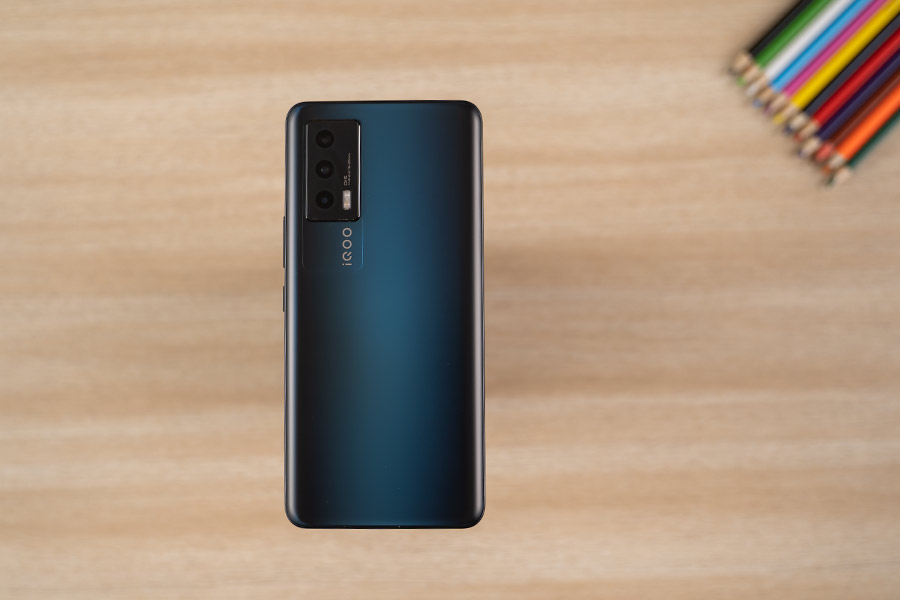
Anyway, soon after publishing my review of Mi 11X, I have been using the iQOO 7 as my primary phone for more than two weeks now. And I think this one has what it takes to be the POCO F3 killer. It seems like iQOO took all the inspiration from Xiaomi and tried to make it even better.
The Mi 11X here is a great phone but it does compromise on one crucial aspect which is the cameras. But with the iQOO 7, you are getting an overall balanced phone, and trust me, I genuinely couldn’t find any major compromises or issues here.
Design & Build
- 76.4 x 163.3 x 8.4mm, 196 grams
- Schott Xensation Glass (front/back), plastic frames
- No IP certification for dust/water protection
- No SD card slot and 3.5mm audio jack
Let me talk about its design first. iQOO has kept things very simple here. The Storm Black variant that’s with me doesn’t have those “in-your-face” gradient patterns we usually associate with Vivo phones.
Yet, to make sure the device doesn’t look like a boring slab, it does have a subtle bluish gradient finish mostly around the center of the back panel. Additionally, the matte back finish doesn’t attract too much fingerprint while the camera module doesn’t protrude either.
Despite featuring a big 6.6-inch display, it weighs less than 200gms and more importantly feels ergonomically pleasing to hold. iQOO says they have used a Schott Xensation protection on both the front and the back, which isn’t as good as the Gorilla Glass but gets the job done regardless.
All the buttons are on the right side, and to differentiate the volume rockers with the power button, iQOO has implemented a brushed finish on the latter. I have also liked their position and tactile feedback. Small things that really matter. The frames are still plastic-made so not everything’s top-notch here.
Some serious sacrifices
Plus, like the Mi 11X, you don’t get a 3.5mm headphone jack and a microSD card slot on the iQOO 7 either. Likewise, the power button here doesn’t double up as the fingerprint sensor, since the company is offering an in-display sensor.
And this definitely adds to the premium experience. It’s an optical fingerprint sensor, so it doesn’t work quite as well if your finger is wet. But in most instances, I have no complaint about its response or accuracy.
Display
- 6.62-inches FHD+ AMOLED display
- 120/300Hz refresh/touch sampling rate
- 1300 nits peak brightness, SGS Eye Care
The display here is a 6.62-inch 1080p AMOLED panel with a 20:9 aspect ratio and a 120Hz refresh rate. Specs aside, this is an excellent quality screen although I have to mention that it’s not as good as flagship phones that are rated A+.
In the default settings, I found the colors to be on a slightly cooler side, with a mild blueish and reddish tint. However, you can always play with the color temperature in the display settings. Likewise, the touch sampling rate here is of 300Hz, which is a bit lower compared to 360Hz on the Mi 11X.
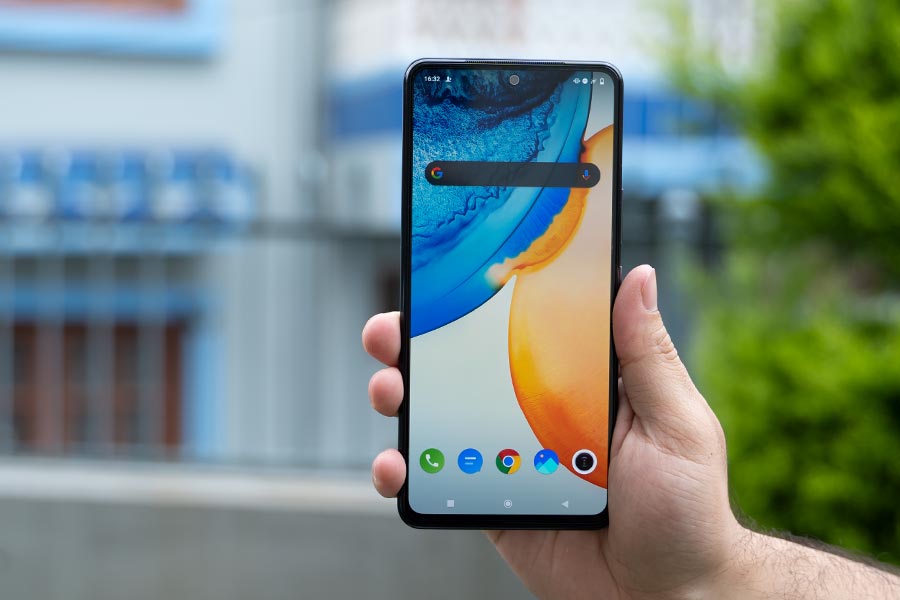
And soon after switching to iQOO 7 from Mi 11X, I could instantly notice how its touch response isn’t as great as Mi 11X. Plus, I also wished the punch-hole cutout’s diameter was slightly smaller. The brightness of this panel is excellent though, and it is easily visible even on a bright sunny day.
It can also achieve extremely low brightness for you to use while in bed and the auto-brightness sensor is swift too. Moreover, the phone also comes with a DC dimming feature. Hence, you can turn on low brightness anti-flicker mode which reduces visual fatigue when the screen brightness is low.
Dedicated display chip
iQOO 7 brings a dedicated intelligent display chip too that converts regular SDR videos to HDR, but I didn’t find that very useful. Similarly, the company claims its dedicated intelligent chip offers an enhanced gaming performance by making use of MEMC tech that boosts fps while playing games. But right now, it is only supported in a handful of games such as COD and Genshin Impact.
Performance
- Octa-core Qualcomm Snapdragon 870 5G SoC (7nm)
- 8/12GB LPDDR4X RAM, 128/256GB UFS 3.1 storage (fixed)
- Android 11 with Vivo’s Funtouch OS 11.1 on top (upgradeable)
Regardless, the actual hardware on the iQOO 7 is pretty darn good. With Snapdragon 870, 8GB of LPDDR4X RAM, and 128GB of UFS 3.1 storage, the gaming performance is excellent.
Gaming experience
Here, even the most demanding games like Genshin Impact don’t stutter when playing at the highest graphics settings with 60fps. iQOO says the phone has a 6000mm square graphite layer cooling system, but playing GPU-intensive games like the one above surely takes a toll on the thermals.
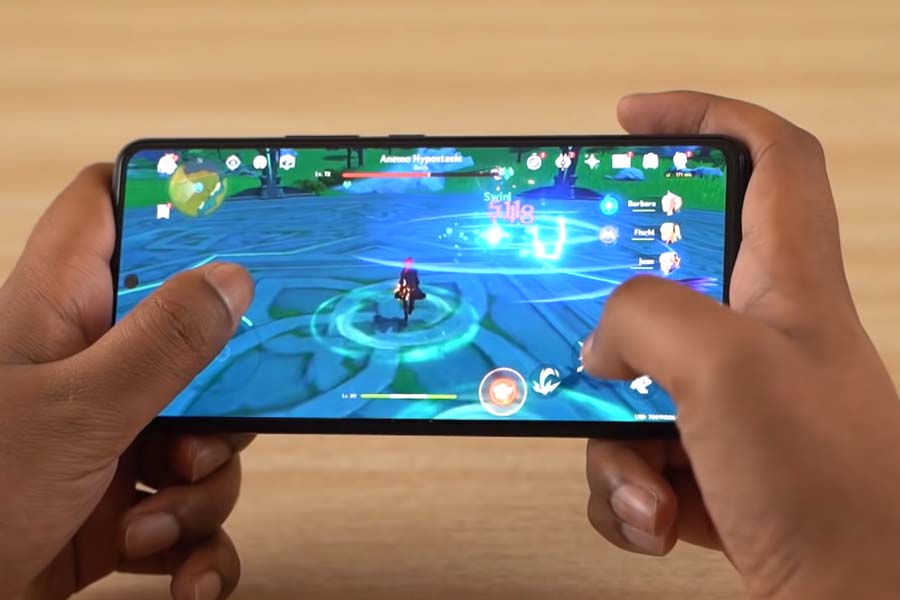
After like 10 mins of gameplay, the phone starts getting warm. But what I like about this phone is that its gaming performance never throttles. Similarly, you can enjoy stable 60fps gameplay in PUBG mobile in HDR graphics and extreme frame rates.
If you want better graphics quality, you can dial up the setting to Ultra HDR graphics and Ultra frame rates too, but this is achieved at the expense of frame rates. Sadly, 120fps-optimized games like Shadowgun Wars and Critical Ops don’t run in 120fps and I think iQOO should fix this soon. Overall the gaming performance is quite good on the iQOO 7.
What about everyday usage?
Needless to say, the day-to-day life performance is stellar too. Apps install faster thanks to UFS 3.1 storage, and multitasking is swift as well. Complemented by a 120Hz refresh rate, everything is buttery smooth here. And unlike cheaper phones with a 120Hz refresh rate, I didn’t encounter micro-lags or stutters in the UI either. Snapdragon 870 handles them all perfectly.
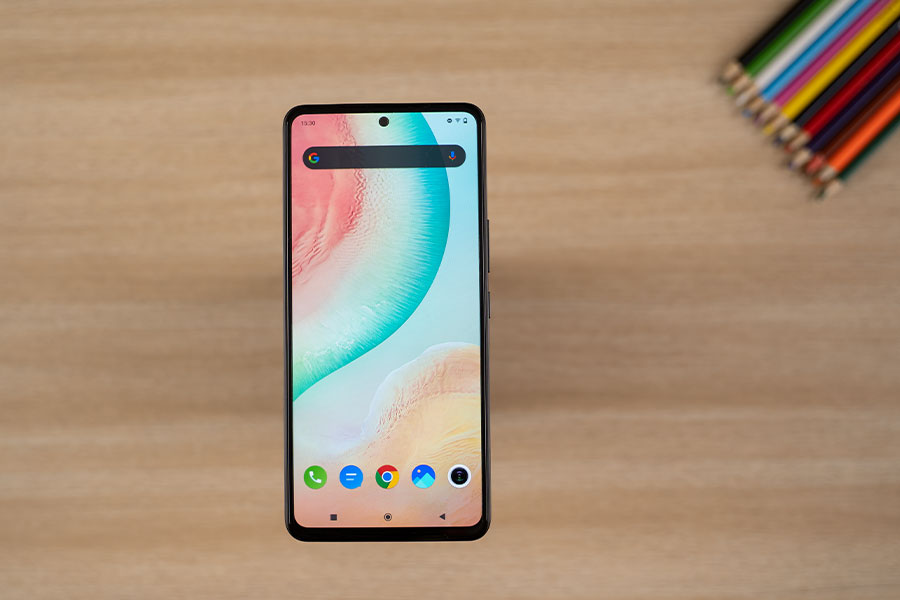
Moreover, Funtouch OS, for the most part, is clean but with some room for improvement. For instance, it comes with a lot of bloatware apps and you cannot even uninstall them.
I’m not fond of Vivo’s own voice assistant Jovi either. Fortunately, you can swap it with Google Feed instead. And I’m quite surprised with how well features like always-on display and dark mode this Android skin implements. If you remember, Xiaomi’s MIUI struggles in this very aspect.
Cameras
- Triple-camera setup at the back
- (48MP main with OIS, 13MP ultrawide, 2MP portrait)
- 16MP selfie camera inside the punch-hole cutout
On top of this, the biggest benefit with the iQOO 7 over the Mi 11X has to be in the photography and videography aspects. Here, you are getting much more capable hardware. It bears a 48MP Sony IMX598 primary lens with Optical Image Stabilisation (OIS), a higher-res 13MP ultra-wide-angle lens, and a modest 2MP portrait camera.
Normal Images
Comparing it with the Mi 11X, the iQOO 7 portraits better colors with superior dynamic range and exposure in shadows.
More importantly, its photos have an eye-pleasing color tone, whereas Mi 11X has this unnatural sharpening going on, while also boosting the contrast.
Wideangle Images
And the same goes with the ultra-wide images.
Images from iQOO 7 are sharper as well, thanks to a higher-res 13MP sensor.
Portrait Images
On the other hand, portrait shots from both these phones aren’t that great though.
Mi 11X brings a pinkish tone to the subject’s face whereas portraits from iQOO 7 look unnaturally orangish. But, it does a slightly better job with sharpness and dynamic range contrary to Mi 11X’s portraits that look like a painting when zoomed in.
Plus, you get lots of cool light effects on the iQOO 7, which you might enjoy playing with too.
Nighttime Images
As the sun goes down, the superiority of iQOO 7’s camera setup ranks higher, thanks to the aforementioned better camera sensor and OIS.
Contrary to Mi 11X, its images are brighter, sharper, and have a better dynamic range.
The night mode on the iQOO 7 also does an excellent job in maintaining exposure and details, while also bringing in more lights, especially in extremely low light conditions.
Selfie Images
Moving on, I have always like Vivo’s optimization when it comes to selfies and the iQOO 7 delivers in this aspect too.
Although the photos are slightly smoothened, they look good and retain a good skin tone.
That being said, Portrait selfie could use some rework with an update, because at times, the edge detection is a mess.
Videography
In the videography aspect, you can capture up to 4K/60fps videos from its primary camera. Although this resolution lacks both EIS and OIS, it’s commendable that iQOO is offering 4K recording capability on a midrange phone regardless.
The EIS and OIS kick-in in other resolutions for stable recordings. Sadly, ultra-wide videos are capped at 1080 60fps and this mode is void of stabilization too.
Upfront, the selfie videos have good details, dynamic range, and the skin tone looks fairly nice as well. Additionally, these videos have ample Field of View too. While the audio pickup is decent, it’s nothing exceptional.
Battery
- 4400mAh battery with 66W FlashCharge
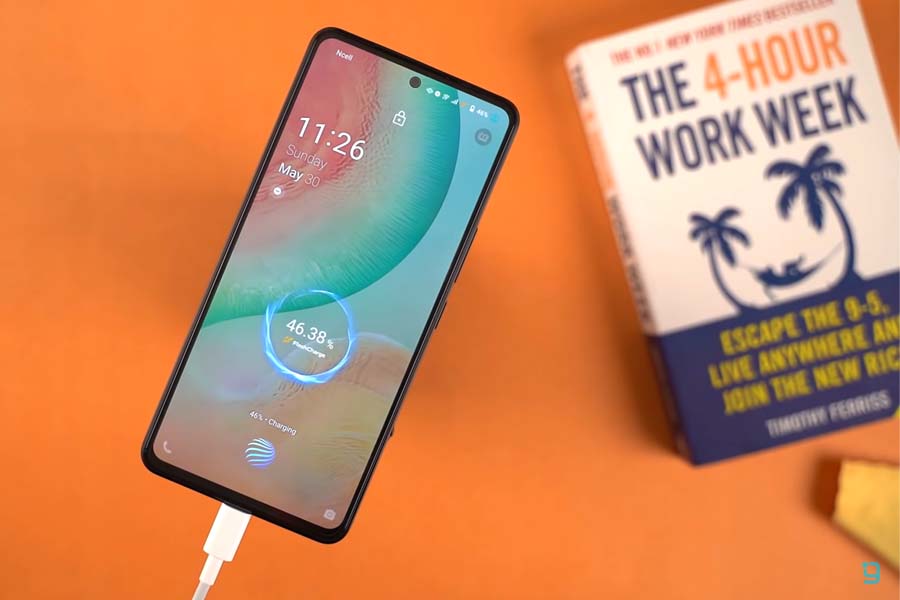
As for the battery, you get a smaller 4400mAh cell on the iQOO 7 whose endurance is quite identical to that of the Mi 11X. On my usage, I got about 5 to 6 hours of screen-on time, which translates to like a day’s worth of endurance. So, yeah, nothing extraordinary but not that bad either.
However, what is excellent here is the charging speed. The 66W charger provided inside the box juices up the battery from 0 to 50% in mere 10 mins while fully charging the phone in less than 35 minutes.
Audio
- Stereo speakers with Hi-Res Audio
Moreover, iQOO 7’s stereo speaker setup is excellent as well. Once again, it’s not as good as those in flagship phones, but I would rate them as very good. Still, I think the vibration motor could have been better as the phone’s haptics isn’t flagship-level. I prefer the haptics on Mi 11X more.
Conclusion
So, I think that covers pretty much everything about the iQOO 7. Like I mentioned at the start of the review, I think the company has managed to deliver an overall balanced phone with the iQOO 7 which even surpasses the Mi 11X in crucial aspects like the camera.
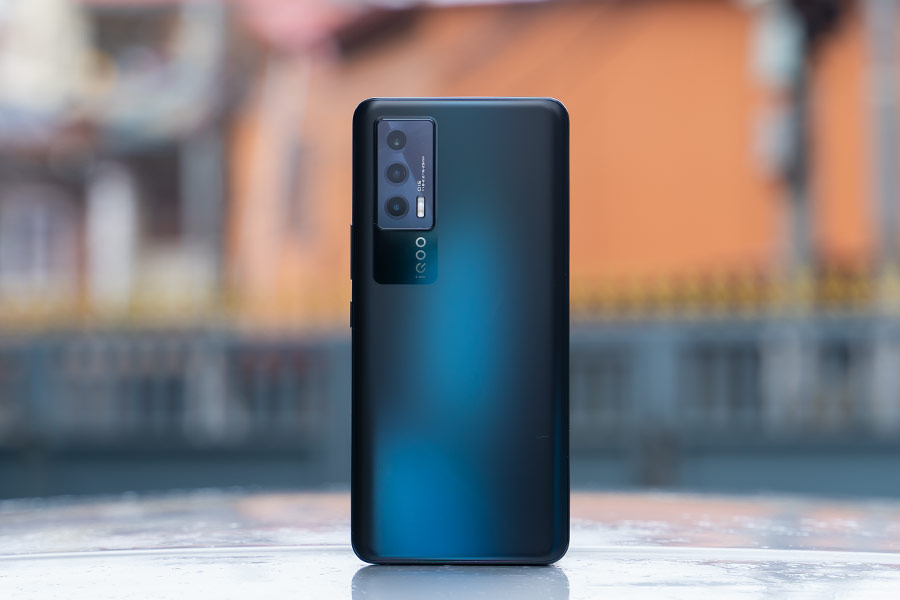
Yet, the problem with iQOO is brand recognition and that’s a major hurdle for a company that is only selling premium and flagship phones in the country. I did a small survey on my own where I asked 10 of my friends if they have heard of iQOO and the result is as follows.
9 of them have never heard of the brand before, out of which 7 of them won’t even consider buying its products despite carrying feature-rich specs at relatively affordable prices. As a result, how can iQOO gain customer trust?
I’m not really sure, I am no expert in that matter. But the one place they can start is by providing review samples for YouTubers like us on time so that we can make review videos as early as possible. Just kidding.
- Watch our video review of the iQOO 7.
iQOO 7 Review: Pros & Cons
Pros:
- Terrific value for money
- Subtle, attractive design
- Bright, vibrant AMOLED display
- Excellent gaming performance
- Great cameras with OIS
- Decent battery endurance
Cons:
- No 3.5mm audio jack
- No expandable storage
- Lacks an IP certification
- Sub-par vibration motor






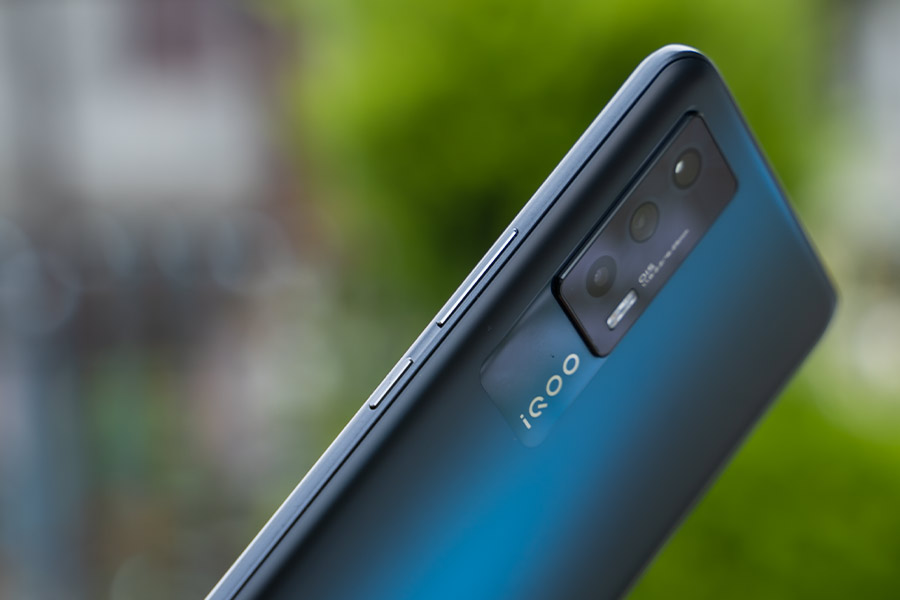
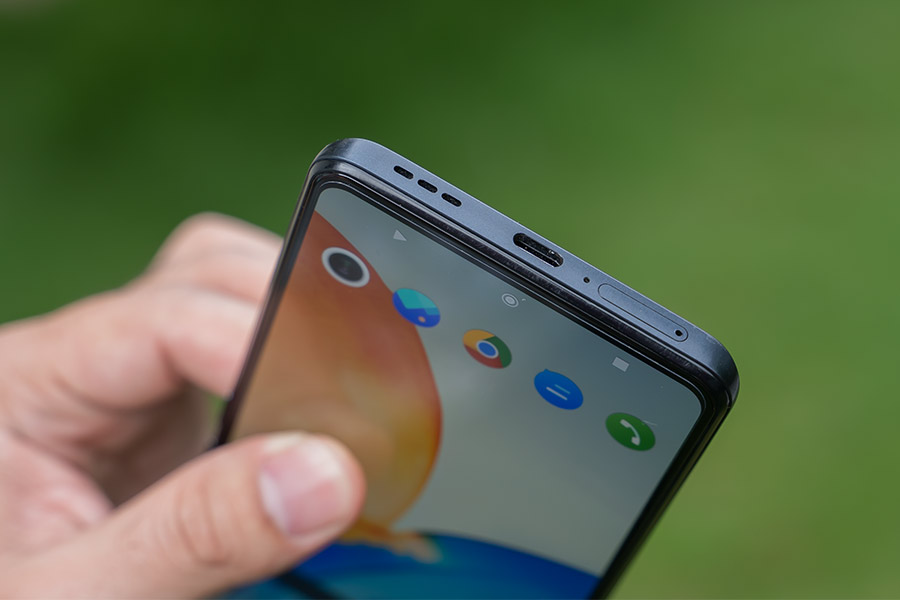
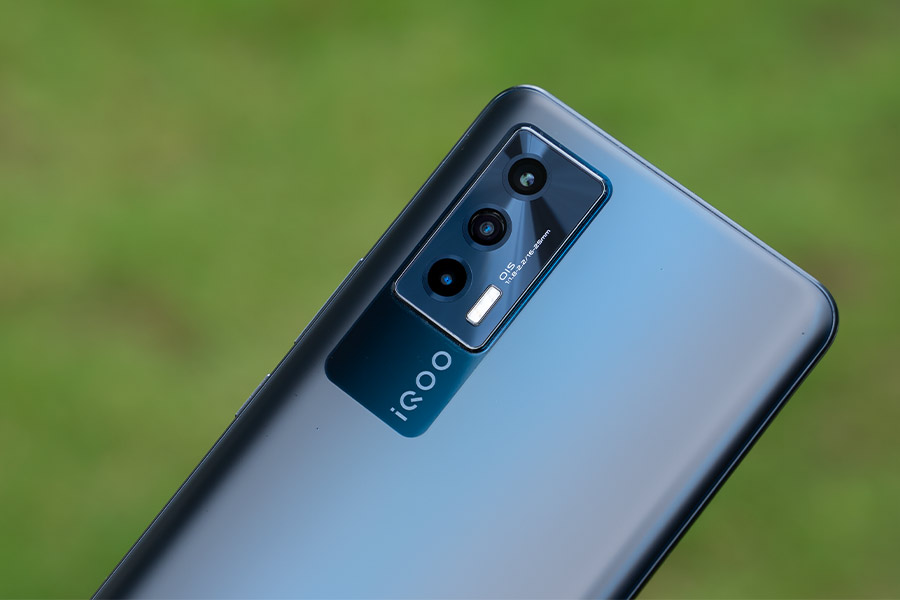
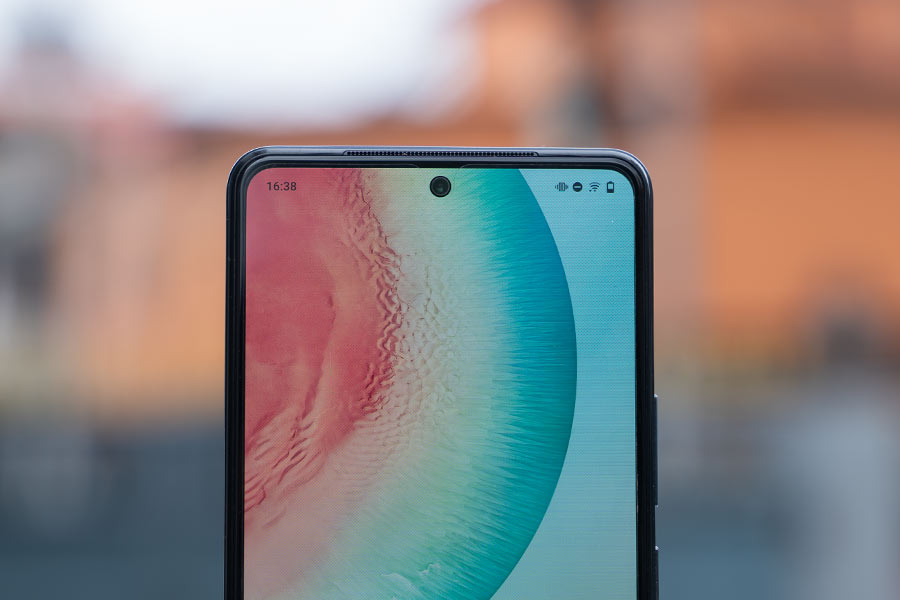

























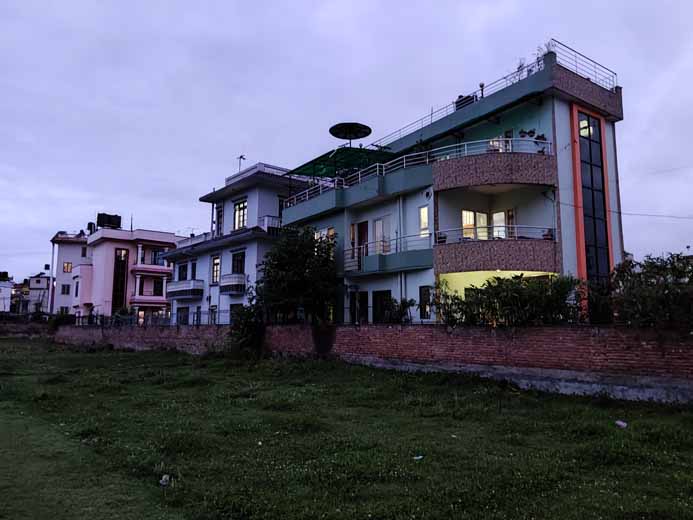

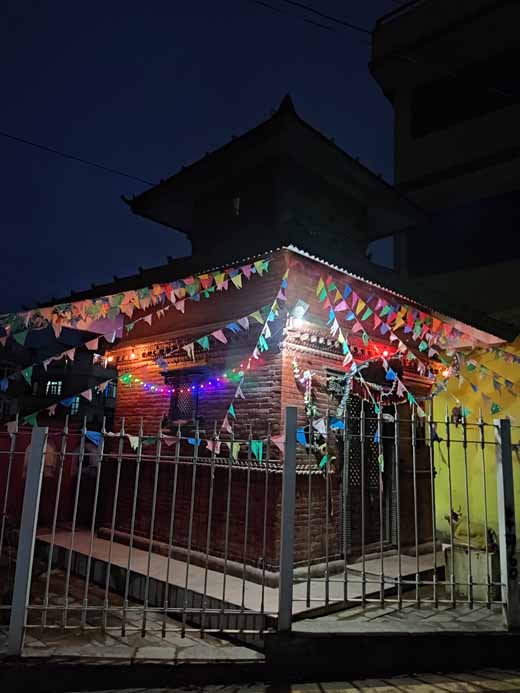















![Best Gaming Laptops in Nepal Under Rs. 250,000 (रु 2.5 Lakhs) [2025] Best Gaming Laptops Under 2.5 lakhs in Nepal [Feb 2025 Update]](https://cdn.gadgetbytenepal.com/wp-content/uploads/2025/02/Best-Gaming-Laptops-Under-2.5-lakhs-in-Nepal-Feb-2025-Update.jpg)
![Best Gaming Laptops in Nepal Under Rs. 120,000 (रु 1.2 Lakhs) [2025] Best Budget Gaming Laptops Under Rs 120000 in Nepal 2025 Update](https://cdn.gadgetbytenepal.com/wp-content/uploads/2025/05/Best-Budget-Gaming-Laptops-Under-Rs-120000-in-Nepal-2024-Update.jpg)
![Best Laptops Under Rs. 80,000 in Nepal [2025] Best Laptops Under 80,000 in Nepal March 2025 Update](https://cdn.gadgetbytenepal.com/wp-content/uploads/2025/03/Best-Laptops-Under-80000-in-Nepal-March-2025-Update.jpg)
![Best Gaming Laptops in Nepal Under Rs. 200,000 (रु 2 Lakhs) [2025] Best gaming lapotp under 2 lakhs Nepal Feb 2025](https://cdn.gadgetbytenepal.com/wp-content/uploads/2025/01/Best-Gaming-Laptops-Under-2-Lakh-Nepal-Feb-2025-Update.jpg)

![Best Mobile Phones Under Rs. 15,000 in Nepal [Updated 2025] Best Phones Under 15000 in Nepal 2024 Budget Smartphones Cheap Affordable](https://cdn.gadgetbytenepal.com/wp-content/uploads/2024/03/Best-Phones-Under-15000-in-Nepal-2024.jpg)
![Best Mobile Phones Under Rs. 20,000 in Nepal [Updated] Best Mobile Phones Under NPR 20000 in Nepal 2023 Updated Samsung Xiaomi Redmi POCO Realme Narzo Benco](https://cdn.gadgetbytenepal.com/wp-content/uploads/2024/01/Best-Phones-Under-20000-in-Nepal-2024.jpg)
![Best Mobile Phones Under Rs. 30,000 in Nepal [Updated 2025] Best Phones Under 30000 in Nepal](https://cdn.gadgetbytenepal.com/wp-content/uploads/2025/01/Best-Phones-Under-30000-in-Nepal.jpg)
![Best Mobile Phones Under Rs. 40,000 in Nepal [Updated 2025] Best Phones Under 40000 in Nepal 2024 Smartphones Mobile Midrange](https://cdn.gadgetbytenepal.com/wp-content/uploads/2024/02/Best-Phones-Under-40000-in-Nepal-2024.jpg)
![Best Mobile Phones Under Rs. 50,000 in Nepal [Updated 2025] Best Phones Under 50000 in Nepal](https://cdn.gadgetbytenepal.com/wp-content/uploads/2025/01/Best-Phones-Under-50000-in-Nepal.jpg)
![Best Flagship Smartphones To Buy In Nepal [Updated] Best flagship phone 2025](https://cdn.gadgetbytenepal.com/wp-content/uploads/2024/07/Best-Flagship-Phones-who-is-it-ft-1.jpg)